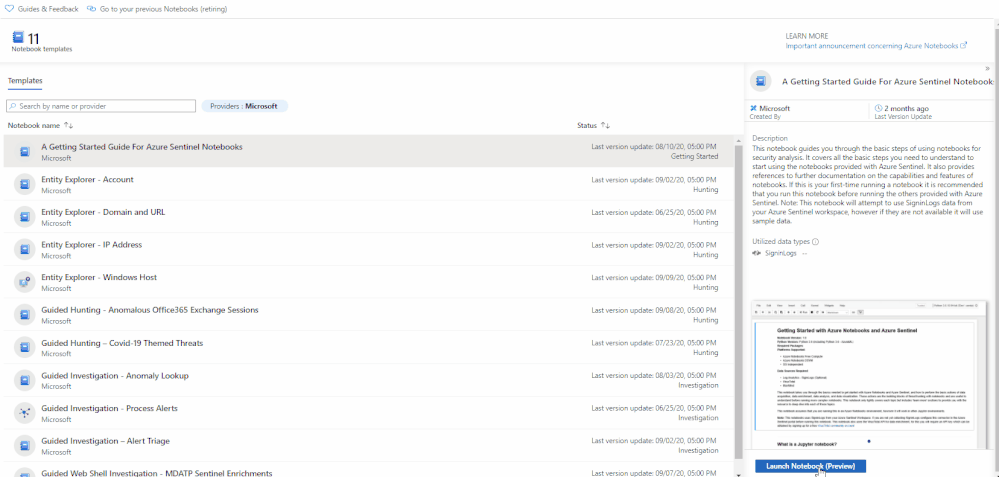
by Scott Muniz | Sep 22, 2020 | Azure, Technology, Uncategorized
This article is contributed. See the original author and article here.
We are happy to announce the public preview for the new and revamped customizable Jupyter notebook experience running on the Azure Machine Learning (AML) platform for analyzing your security data, all within a secure Azure cloud environment!
The new user experience provides an updated interactive UI with Intellisense for improved productivity, support for existing Jupyter and JupyterLab experiences, dedicated notebook compute, as well as point-in-time notebook snapshots and a notebook file explorer for easy notebook collaboration. In addition, take advantage of built-in security analytics via Jupyter notebook templates and the MSTICPy Python library help jumpstart your security analytics and operations.
Whether you are a seasoned security analyst with extensive Python and Jupyter experience, or just starting out, you can immediately start experiencing these benefits by adding Jupyter notebooks to your threat defender arsenal.
We highly recommend you check out the Getting started with Azure Sentinel Notebooks video and the official documentation to get started.
New intuitive and approachable UI
A new UI experience based on the open source Nteract project. This simple and intuitive UI focuses on delivering simplicity and ease-of-use with full IntelliSense and inline error highlighting directly in your notebooks, drag-and-droppable cells, individual tabs for each notebook, inline toolbars and less clutter. Support for Jupyter and JupyterLab experiences and 10X faster Azure Sentinel notebook launch times.

Improved collaboration and versioning
Easily share notebooks and other artifacts with other security analysts across your team and/or organization. A new notebook file explorer to browse your notebooks and your team’s notebooks in one place making it easier to collaborate. Revert changes or review prior data by using the new check-point feature to take point-in-time notebook snapshots.
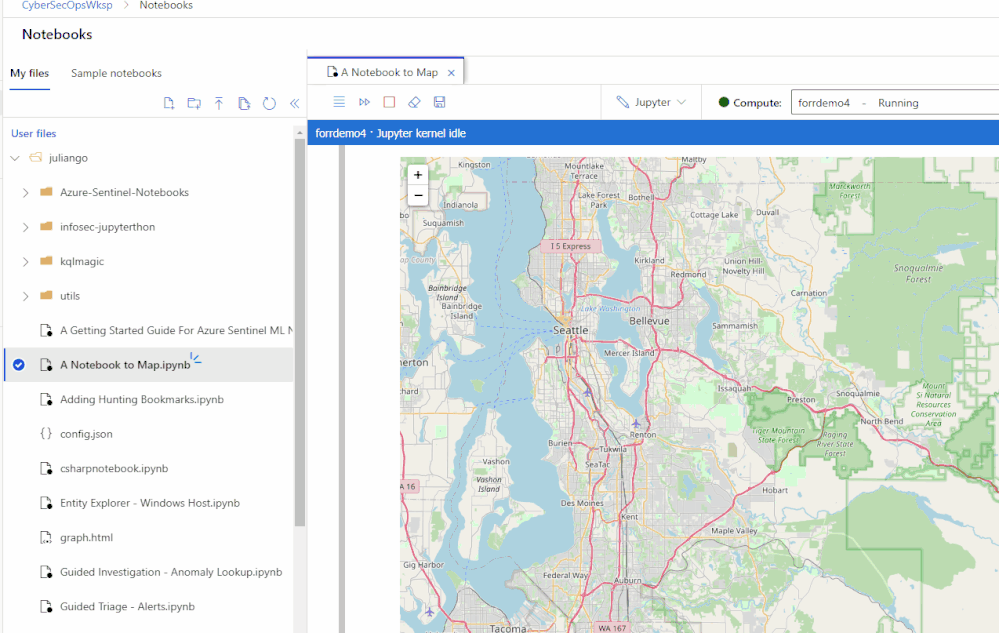
Managed and flexible compute with additional security features
Pay only for the resources you consume with fully managed dedicated cloud-based compute for executing your notebook workloads. Terminal access to your notebook compute. Ability to install custom Jupyter kernels (such as PowerShell and C#). Azure Resource Manager (ARM) templates for compute deployments (article). Additional security features such as RBAC and SSH policy options available today with VNET support coming in the fall.
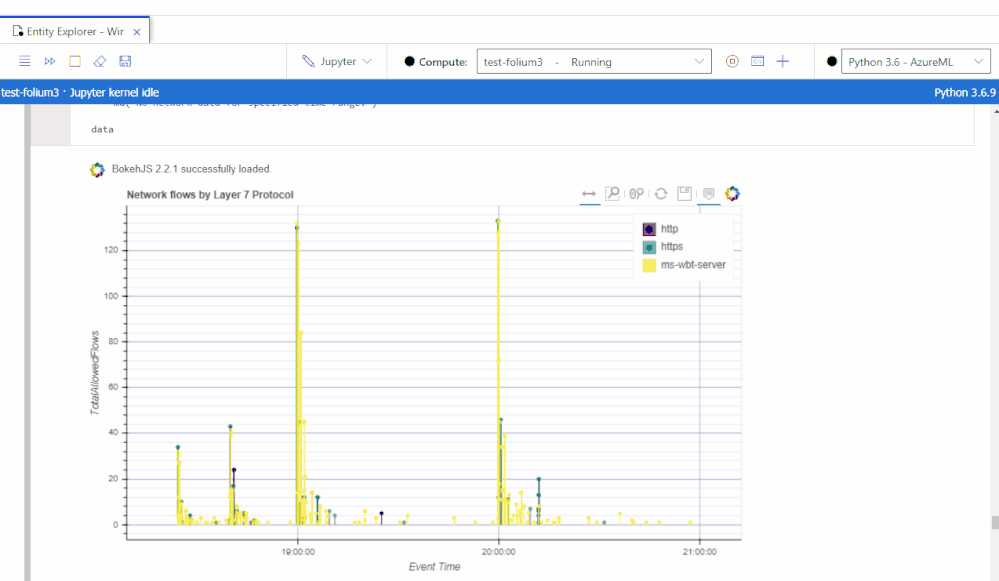
Happy threat hunting and investigation!
by Scott Muniz | Sep 22, 2020 | Azure, Technology, Uncategorized
This article is contributed. See the original author and article here.
Hosting SSRS databases in Azure SQL Managed Instance
This article outlines the spectrum of options available for migrating your solutions based on the SQL Server Reporting Services (SSRS) to Microsoft cloud, with focus on the newly-introduced support for hosting SSRS databases in Azure SQL Managed Instance.
Modernizing at your own pace
In times of uncertainty, it’s important to have a flexibility to take approach that makes the most sense for your business. Some organizations slow down to operate more cost-effectively and play as safe as possible, while others lean into new opportunities that didn’t exist before.
Same goes for the appetite for modernization while migrating to Microsoft cloud: you may decide to simply lift and shift your solutions, and still benefit instantaneously from certain capabilities available in cloud only, or you can aim for migrating to cloud native SaaS and PaaS solutions that may require adopting new concepts, but also may be way more rewarding in terms of the modernization, out-of-the-box capabilities offered, and new scenarios unlocked.
SQL Server vs. SQL Server database engine
Azure SQL as a family of managed, secure, and intelligent SQL database services is a good example of flexibility offered when migrating your solutions to Azure. The entire Azure SQL family is built upon the same SQL Server database engine, so your skills and experience transfer easily to the cloud. Still, you are in control of the level of change you want to introduce, by choosing one of the available database services – SQL Server on Azure Virtual Machine, SQL Managed Instance, or SQL Database.
However, your solutions may be leveraging SQL Server capabilities beyond its database engine as a core component. Let’s name a few most used ones:
Integration Services (SSIS) – platform for building data integration and transformation solutions,
Analysis Services (SSAS) – analytical data engine with tabular and multidimensional mode,
Reporting Services (SSRS) – tools and services for creating and managing paginated reports.
For each of these powerful and widely adopted SQL Server capabilities there is a choice of options for migration to Microsoft cloud: you can always opt for the simple lift-and-shift approach and host them on the SQL Server on Azure Virtual Machine, resembling the layout from your on-premises environment, or you can decide to leverage equivalent cloud native offerings.
When it comes to hosting SQL Server Reporting Services (SSRS) in the Microsoft cloud, there are two main options:
- Moving your SSRS paginated reports to the Power Bi Premium service
- Deploying SQL Server Reporting Services virtual machine
The second option has a couple of variations, and to be able to differentiate between the variations we should note that SSRS consists of two components: report server which is a stateless engine of the SSRS, and report server databases storing metadata and temporary report results.
SSRS uses two databases to separate persistent data storage from temporary storage requirements. The databases are created together during the installation of SSRS and bound by name. By default, the database names are ReportServer and ReportServerTempDB, respectively.
Earlier mentioned variations pertain to where report server databases are being hosted, and we’ll explain the difference as we go through the options.
Moving your SSRS paginated reports to the Power Bi Premium service
SSRS paginated reports are optimized for printing or PDF generation, providing you with the ability to produce highly formatted, pixel-perfect layouts. Typical use case for paginated reports are operational reports like sales invoice, or profit and loss statement.
In contrast, typical Power BI report is optimized for exploration and interactivity – you can easily slice and dice data, discover relationships and patterns, in other words it’s ideal for analytical reports.
Obviously, both types of reports remain important and having both types in one place, sharing the infrastructure of Power BI service, including the search, monitoring and auditing capabilities provides a great benefit. You can also drill through from the Power BI report to a paginated report, embed paginated report, or share its content through a Power BI app. Check the Paginated reports in Power BI FAQ for more details.
To migrate your existing paginated reports in the Report Definition Language (RDL), you can use RDL Migration Tool written by Microsoft and available on GitHub. More detailed guidance on the entire migration process is provided in the Migrate SQL Server Reporting Services reports to Power BI article.
There are currently few limitations that you may need to circumvent to be able to migrate your SSRS reports to Power BI. Also, note that publishing paginated reports in Power BI requires Premium subscription.
Deploying SSRS on SQL Server on Azure Virtual Machine
If you are rather interested in a quick lift and shift of your existing SSRS solution, you can simply deploy SSRS on Azure Virtual Machine, just like on any (virtual) machine on premises. Here you have a full freedom of choice among the supported version of Reporting Services, so you can even use the same version that you are using on premises.
You can reuse the same Azure Virtual Machine for SQL Server database engine to store report server databases. Choosing a local instance is useful if you have sufficient system resources or if you want to save on software licenses. On the other hand, running the report server databases on another instance of SQL Server can improve performance.
While SQL Server on Azure Virtual Machine offers some automated manageability features like automatic backups and security patching, note that other aspects like configuring and maintaining high availability through Always On Availability Groups are not provided by the platform.
(New) Hosting report server databases in Azure SQL Managed Instance
This leads us to the variation that you may find useful if you are fan of fully managed database services, eliminating need for managing the database engine manually. With this approach, your stateless report server installed on Azure Virtual Machine connects to report server databases hosted on Azure SQL Managed Instance. High availability of databases here comes out of the box, with 99.99% availability SLA. You can leverage auto-failover groups as a disaster recovery solution for the most critical solutions, or geo-restore capability for less critical ones. You can also use point-in-time restore (PITR) functionality to recover from accidental report changes.
If your SSRS reports are pulling the data from databases hosted on Azure SQL Managed Instance, it’s reasonable to host report server databases on the same instance, thus minimizing the database engine footprint.
SQL Server 2019 Reporting Services come with native support for hosting report server databases in Azure SQL Managed Instance – just point your SSRS to the instance during the setup, or re-point the existing installation using SSRS Configuration Manager. You can also restore a backup of your report server database from on-premises SQL Server on Azure SQL Managed Instance.
If you’d rather keep the older supported version of SSRS that you are using on premises, you can still host report server databases on Azure SQL Managed Instance. You should just configure the instance before installing legacy version of SSRS on Azure Virtual Machine. Configuration steps are very simple and ensure that some of the commands issued during the installation process by legacy versions of SSRS, that has been eliminated in SSRS 2019, are safely ignored by SQL Managed Instance:
-- Turn the advanced configuration options on:
sp_configure 'show advanced options', 1 ;
GO
RECONFIGURE;
GO
-- Enable suppression of error messages for recovery model change:
sp_configure 'suppress recovery model errors', 1 ;
GO
RECONFIGURE;
GO
Visit Suppress recovery model errors server configuration option to learn more about this configuration option.
Conclusion
There are multiple options to choose among when deciding on the approach for moving your SSRS solution(s) to Microsoft cloud. Options cover the entire spectrum from Infrastructure-as-a-Service (IaaS) solutions offering completely the same experience as with on-premises SQL Server enriched with some management automation options, through leveraging Platform-as-a-Service (PaaS) solution for hosting report server databases on Azure SQL Managed Instance (newly-introduced option), all the way to Software-as-a-Service (SaaS) solution with SSRS paginated reports in Power BI service. This flexibility allows you to modernize at the pace that makes the most sense for your business.
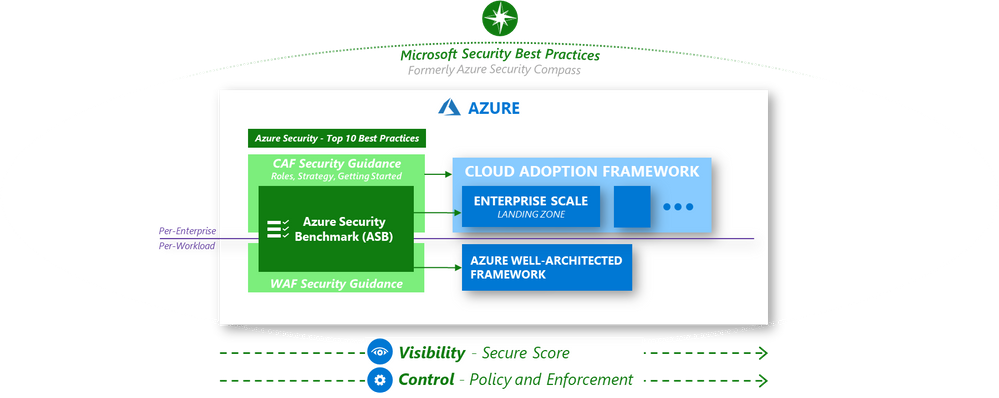
by Scott Muniz | Sep 22, 2020 | Azure, Technology, Uncategorized
This article is contributed. See the original author and article here.
Today we are pleased to announce the Azure Security Benchmark v2. To accelerate the security of your cloud adoption journey, Microsoft has developed the Azure Security Benchmark (ASB). The benchmark is designed to provide clarity on security best practices and controls for configuring and operating Azure and Azure Services.
ASB v2 builds on the work of ASBv1 and includes these updates:
Vision for azure security guidance

We have learned that securing Azure means different things to different roles in the organization and have built a system of integrated security guidance. Each of these are aligned together to simplify your security journey:
- Microsoft Security Best Practices – Recommendations for securing all assets in your enterprise, typically integrated into security architectures and strategies.
- Azure Well-Architected Framework – Guidance for workload owners to architect workloads that meet goals for security, performance, cost, and more.
- Cloud Adoption Framework (CAF) – Guidance for cloud adoption initiatives to plan and execute on a strategy that meets organizational goals for security, cost management, reliability, and more (includes Enterprise Scale Landing Zone reference implementation and automation)
- Azure Security Benchmark – Prescriptive best practices and controls to guide all roles in the security organizations on securing Azure and Azure Services
Over the course of the last few months, the teams working on ASB, Enterprise Scale Landing Zone in CAF, Azure Security Compass, Azure Security Top 10 Best Practices, and Microsoft Best Practices have been working to consolidate and align all this guidance together to make it simpler and easier for you to rapidly secure your Azure resources.
As with all our guidance, we would love to hear your feedback on how this is working for you and how we can improve it. You can reach us by sending us email.
What’s new in ASB v2?
In addition to mapping and aligning all the guidance together, the team focused on these improvements in ASBv2:
- Mapped to NIST SP 800-53 Controls: NIST SP 800-53 is one of the most used control frameworks in the Industry, so we updated the ASB controls to map with the NIST controls. Now you can use ASB to meet the NIST requirements in Azure and can monitor the requirements in Azure Security Center Compliance dashboard. The benchmark and mapping to NIST controls is also available in excel format for easy consumption.
- Identified Security Stakeholders: We added security stakeholders to each recommendation to help you bring in the right people in your organization to plan, approve, or implement it. The stakeholders are identified by their roles and responsibility definitions from the CAF.
- Updated and restructured the security controls to provide more clarity: We made changes to the Azure security controls to make them actionable and more effective. A few examples are:
What’s coming next?
Here is a brief overview of upcoming features:
- Monitoring of ASB v2 recommendations: Today, you can use the Azure Security Center Regulatory Compliance Dashboard to monitor your live Azure environment status with all the Azure Security Benchmark controls. In upcoming weeks, Security Center will be fully integrated with ASB v2, automatically monitoring your environment with policies implementing the complete ASB v2 control set by default.
- Implementing the Benchmark recommendations: In coming weeks, we will be publishing the ASB v2 blueprint which will help you to implement and enforce the benchmark requirements. Today you can achieve that by using Enterprise scale landing zone to get a head start and use it to implement the Benchmark recommendations.
- Security Baselines based on ASB v2: So far, we have published security baselines for 50 Azure services based on ASB v1. These baselines provide service guidance on how you can meet the Benchmark requirements for a specific service. Azure customers today use these baselines as part of their cloud service assessment process. In upcoming months, we will be updating these baselines and adding more service baselines based on the ASB v2 recommendations.
- Control framework targeted next: After CIS v7.1 and NIST SP 800-53 control mapping, we are working on adding mapping of PCI DSS control requirements in coming months. This will help you to meet PCI DSS control requirements using the Azure Security Benchmark.
Call to Action
You can get started now with planning and implementing the Azure Security Benchmark v2, automate deployment with Landing Zone, and monitor status using the Azure Security Center Regulatory Compliance Dashboard.
We want to thank the multiple teams within Microsoft, contributors from the Azure community, and NIST for the help with ASBv2 effort!
If you would like to participate in improving the benchmark or provide feedback, please send us an email. We would love to hear your success stories and feedback on how to make it better!
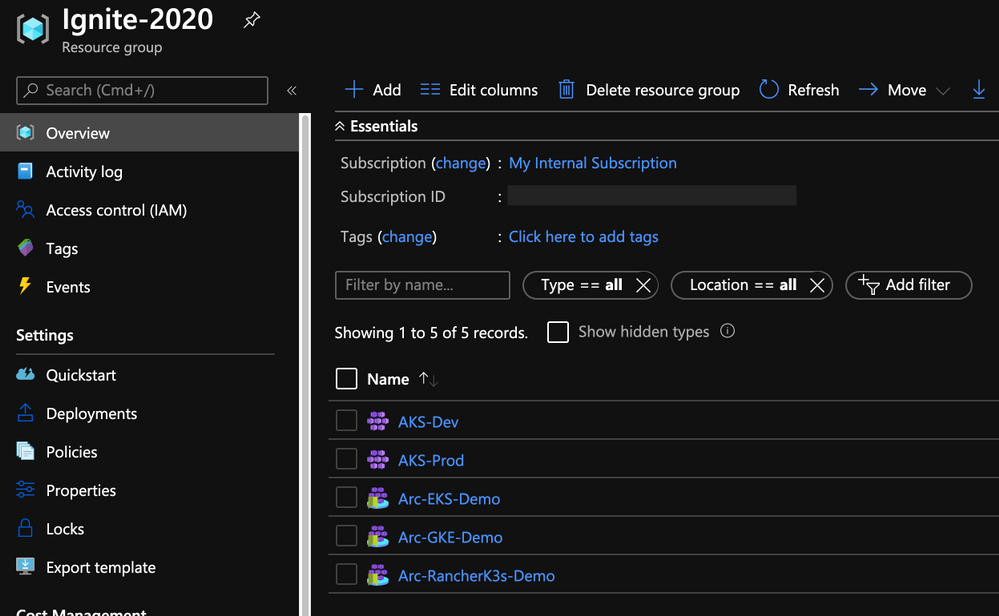
by Scott Muniz | Sep 22, 2020 | Azure, Technology, Uncategorized
This article is contributed. See the original author and article here.
These days, it seems like Kubernetes is one of the most popular conversation topics in the world of Cloud and modern applications. The question is not if your organization uses Kubernetes, it is when the organization will use it.
This post will focus on the need for standardization and not if Kubernetes is meeting your business and technical requirements or not. So now we established the assumption that you already use it, let’s talk about a couple of challenges.
Challenges #1 – Sprawling
If you are in the process of modernizing your applications and adopting cloud-native design patterns, you know, like “next-gen” scalability, availability, security, etc. you probably have some notion of why Kubernetes. But the challenge, in this case, is the Kubernetes cluster sprawl that is about to hit you.
Rather you are building it yourself on-premises, using the gazillion Kubernetes flavors out there, installing on bare-metal or deploying one of the managed Kubernetes offerings the cloud providers has to offer, the problem remains, and all of a sudden you are in the business of managing Kubernetes clusters, well, all over the place. I like to call this “my fleet is out of control” :)
Challenge #2 – “I am drifting away…”
You got your clusters, good for you! But how do you keep all these clusters configured the way you left it?! Don’t you want them to be all meet your configuration baseline?! You do!
It’s not just your clusters that matter because after all, the applications are what drives the business!
Looking at both situations, you can see a recurring theme. This is really about making sure no configuration, rather on the cluster and/or the applications deployed on it are drifting away. You want this because otherwise, you might be facing an outdated application or a cluster that is not meeting for example your security needs.
Azure Arc enabled Kubernetes + GitOps == Wining
Now that we addressed these couple of challenges, we can talk a solution – enters Azure Arc enabled Kubernetes with GitOps configurations.
By extending or “stretching” the Azure Resource Manager (ARM) control plane, we are able to project your Kubernetes clusters which are deployed OUTSIDE of Azure as 1st class citizens inside Azure next to existing resources, for example, as you can see in the figure below, Azure Kubernetes Service (AKS) clusters reside next to Azure Arc ones.
By doing so, you get a single interface to rule them all which is the start of the solution to challenge #1 – the sprawl of clusters.
 Azure Arc enabled Kubernetes clusters alongside AKS clusters
Azure Arc enabled Kubernetes clusters alongside AKS clusters
Projecting the clusters is the fundamental building block and now you apply GitOps Configurations for these clusters. Azure Arc with Kubernetes and GitOps is not scary as one might think, the concept and the flow are very straight forward.
Generally speaking, GitOps with Kubernetes is about deploying your applications based on Git repository which represents the “source of truth” or the baseline for this app deployment.
It relays on a Kubernetes Operator, which Is the Flux Operator in the Azure Arc Kubernetes case to “listen” if changes are being made on the baseline, meaning the repo. If such changes occur, the operator will initiate a rolling update Kubernetes deployment, deploying the new Pods and terminating the old one.
This can be done against a standard Kubernetes YAML manifest or a Helm charts release, using also the Help Operator with conjunction to the Flux one (which also gets deployed automatically).
 Application deployment GitOps flow with Azure Arc enabled Kubernetes
Application deployment GitOps flow with Azure Arc enabled Kubernetes
- Existing Kubernetes clusters are already deployed
- Azure Arc Kubernetes connected cluster is created
- The user creates Azure Arc Kubernetes cluster GitOps Configuration
- The Flux Operator (and optionally the Helm Operator) is deployed on the cluster and starts” listening” to the git repository with the user’s application code
- The Flux operator initiates the user’s application deployment on the cluster, representing the current desired state
- User is updating the application (creating a new app version) and merge changes to the repository
- Flux pick up a change to the Git repository
- Flux operator initiates a new user’s application version deployment on the cluster while removing old version application pods, resulting in a new Desired State
Cluster-level Configuration vs. Namespace-level Configuration
Cluster-level Configuration
With Cluster-level GitOps Configuration, the goal is to have a baseline for the “horizontal components” or “management components” deployed on your Kubernetes cluster which will then be used by your applications. Good examples are Ingress Controller, Service Meshes, Security products, Monitoring solutions, etc. Having such deployments as part of your GitOps Configuration will assure your cluster is meeting the cluster baseline standards.
Namespace-level Configuration
With Namespace-level GitOps Configuration, the goal is to have the Kubernetes resources deployed only in the namespace selected. The most obvious use-case here is simply your application and it’s respective pods, services, ingress routes, etc. Having such deployments as part of your GitOps Configuration will assure your applications are meeting the Kubernetes applications baseline standards.
 Azure Arc enabled Kubernetes GitOps Configurations
Azure Arc enabled Kubernetes GitOps Configurations
So, as you can see, by having the same GitOps Configurations for all your Kubernetes clusters, managed by Azure Arc you are solving challenge #2 and able to govern a potential cluster and application config and versioning drifts.
Get Started Today!
In this post we briefly touched on the power of using Azure Arc enabled Kubernetes alongside its native GitOps Configurations capabilities. Having all your Kubernetes clusters projected as Azure resources and have the same GitOps Configurations for all of them will allow you to gain much better control for both fleet management and deployment baselines as well as drift avoidance.
To get started, visit the Azure Arc Jumpstart GitHub repository, where you can find more than 30 Azure Arc deployment guides and automation, including how to deploy end-to-end GitOps flows against your Azure Arc enabled Kubernetes clusters as well as visit the official Azure Arc documentation page.
In addition, check out these additional great Azure Arc blog posts!
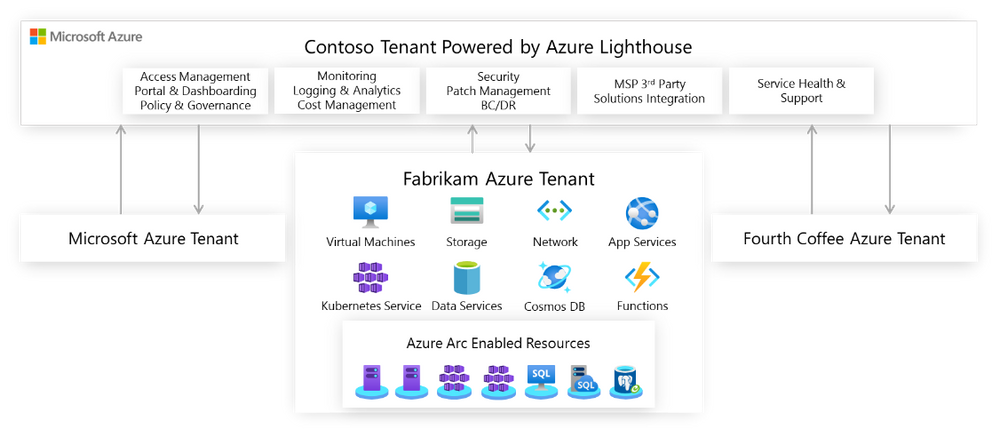
by Scott Muniz | Sep 22, 2020 | Azure, Technology, Uncategorized
This article is contributed. See the original author and article here.
This blog post is co-authored by @Nikhil_Jethava and @LauraNicolas
Modern organizations often manage diverse and complex IT infrastructures that frequently sprawl to multi-cloud environments.
Many enterprises have chosen pattern or vendor specific tools causing a ruptured management experience and an inconsistent approach to their operations. This problem is heightened with the pressure to innovate and deliver applications faster to the market, as well with the explosion of cloud native technologies and practices. The absence of single view and consistent tooling complicates the management for customer and partners alike.
Azure is focused on delivering innovation anywhere with a wide offering of hybrid services that meet customers and partners requirements as their environments become more complex. When Azure Lighthouse was introduced, it was another major step to address these challenges as it uncovered new possibilities for cross tenant management in the Azure platform with greater scale, visibility, and accuracy, turning the Azure Portal into a single control plane. With the addition of Azure Arc these cloud operations and practices can be extended to every workload and infrastructure, regardless of what it’s running or where is running.
Build a single view to manage across tenants.
Azure Lighthouse enables cross and multi-tenant management bringing greater scale and visibility into operations. The secret sauce behind Azure Lighthouse is the Azure Delegated Resource Management capability that logically projects resources from one tenant onto another and unlocks cross-tenant management with granular role based access and eliminates the need to do context switching.
Although Azure Lighthouse will work on any multitenant scenario, like customers that may have multiple Azure AD tenants (e.g. multiple subsidiaries or geographies in separate tenants) and it is very valuable for partners, specially Managed Service Providers (MSPs) as they can realize efficiencies using Azure’s operations and management tools for multiple customers.

To illustrate this scenario, let’s take a look at Contoso who is responsible for the IT operations of three separate entities: Microsoft, Fabrikam and Fourth Coffee, each of them running Azure workloads on dedicated tenants. Azure Lighthouse enables Contoso to centrally manage resource inventories, access and identity, governance, monitoring and security across all the other three tenants. By aggregating all this data in a single view, Contoso can achieve consistency, security, and compliance for all the tenants while achieving greater operational efficiencies and building new offerings.
Governance and Compliance Management
With Azure Policy, Contoso can create, edit and apply policy definitions within the delegated subscriptions, they can also get a compliance snapshot that ensures that managed resources are compliant with corporate or regulatory standards from all three tenants having a full picture of the compliance status. Also, if Contoso develops new policies their intellectual property will be protected by using Azure Lighthouse as they can be centrally managed from their own central tenant.
The Azure Policy portal has been enhanced so you can select multiple scopes that will include a list of managed tenants and subscriptions:
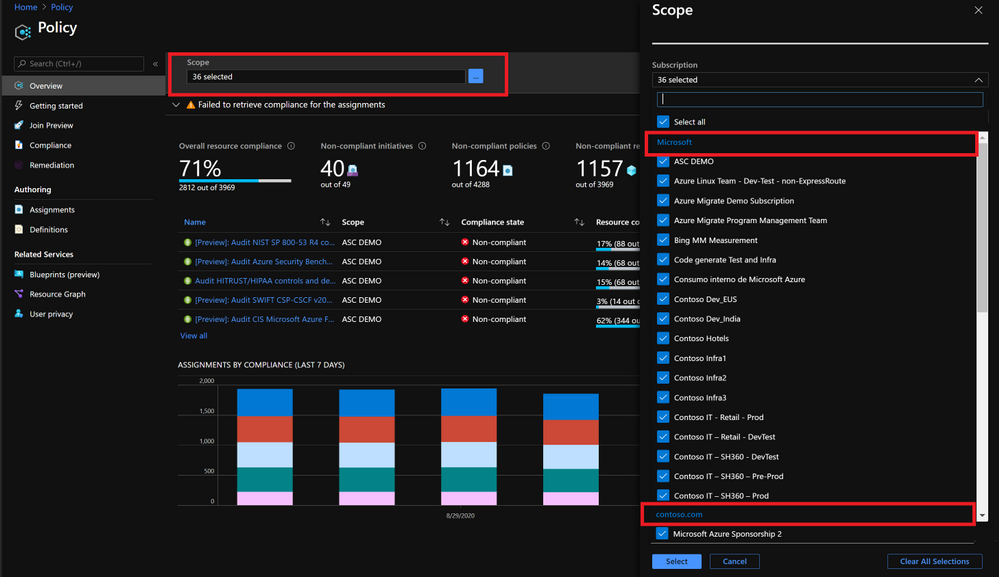
Inventory Tracking and Management
Contoso has now the ability to develop multitenant queries using Azure Resource Graph to filter resources, leverage tags or track changes. The tenant ID can be returned in the query results, so the subscription and delegated tenant can be identified.
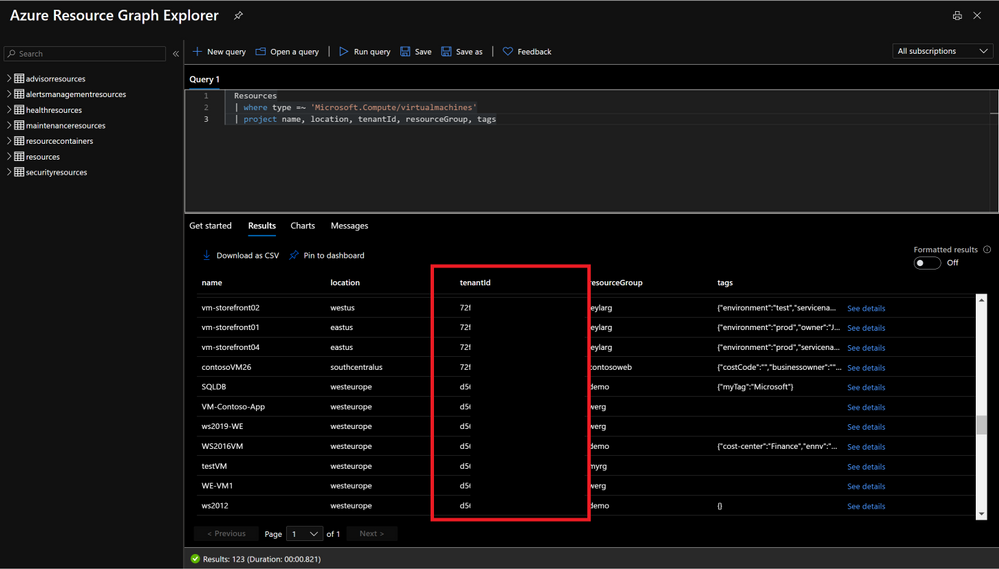
Monitoring and Alerting
Contoso can also get monitoring and security alerts across all of the tenant’s subscriptions, run multitenant queries using KQL and set up dashboards that provides valuable insights on the managed environments. There is no need to store logs from different entities into a shared log analytics workspace, Microsoft, Fabrikam and Fourth Coffee can keep their logs on a dedicated workspace in their subscription, while Contoso gets delegated access to them and get insights from all tenants. Once again Contoso can choose the scope they want to work with in the portal.
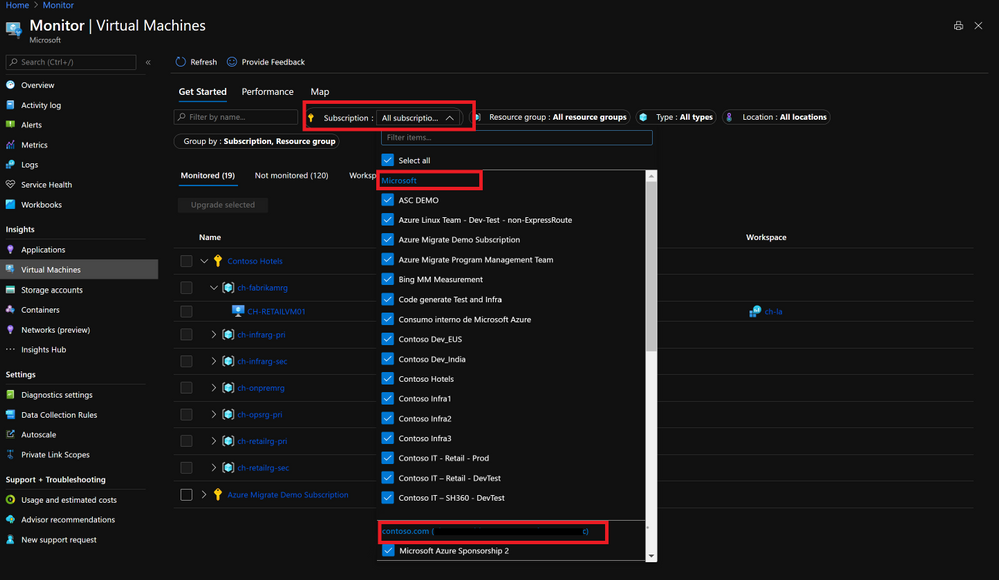
Security and Compliance
Contoso can offer managed security services by centrally protecting Azure resources with Azure Security Center and Azure Sentinel they can provide proactive/reactive security best practices. Azure Security Center has cross-tenant visibility to manage security posture centrally and take actions on recommendations, detect threats, and harden resources.
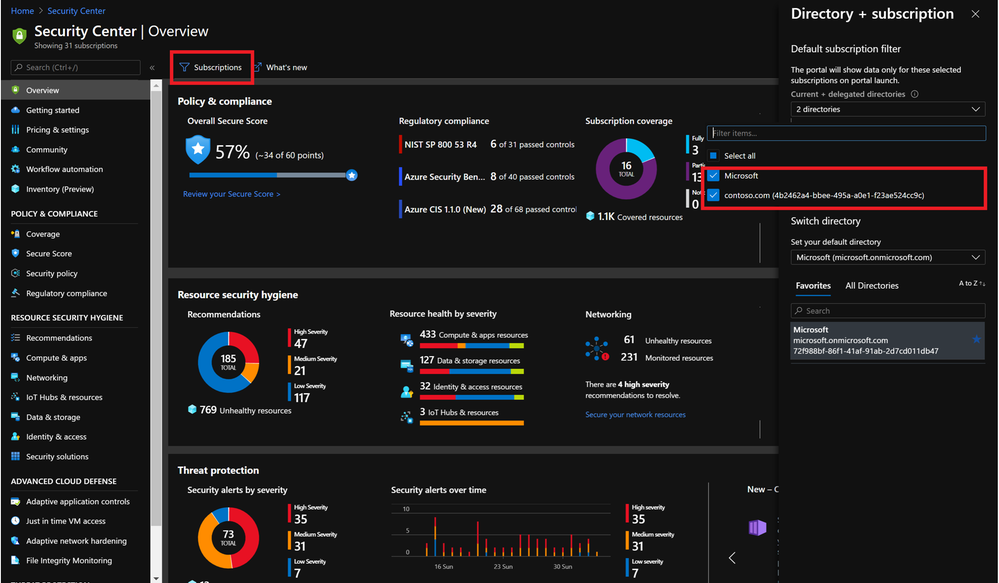
Azure Sentinel when working with Lighthouse, can track incidents and attacks across tenants as well as define cross-tenant KQL queries.

Process Automation and Configuration Management
Azure Automation can be set up at scale, including runbook automation, desired state configuration and update management. Contoso can automate processes running custom scripts on the managed tenants while having their IP protected.

Resource Deployment at Scale
Lighthouse allows Contoso to not only operate but also deploy and configure Azure services on the managed tenants’ subscriptions. Taking care of their networking, storage, virtual machines, container environments and PaaS services. The management of operational tasks of those resources like backup or disaster recovery are very often handed off to specialists like Contoso that can centrally manage backup, restore and replication as well.
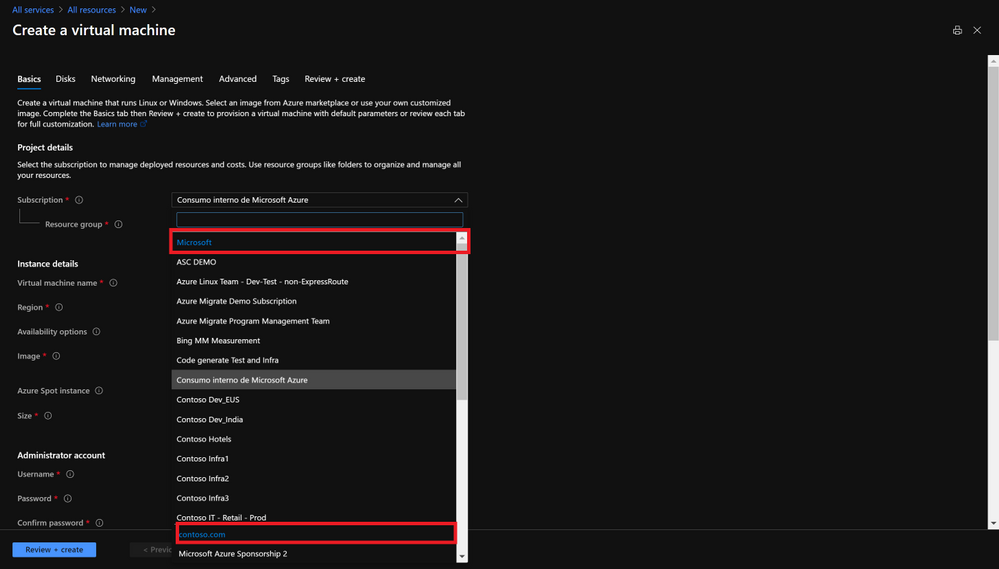
Extend Azure management across your environments.
Very often, enterprises have resources on-premises or on other clouds and they need to extend operations to those hybrid and distributed states. Having built processes and offerings using Azure Services and Lighthouse it would be very powerful if those could be stretched to run across on-premises, other clouds, or the edge.
With Azure Arc your on-premises and other clouds deployments become an Azure Resource Manager entity and as such, servers, Kubernetes clusters or data services can be treated as first-class citizens of Azure. As any other ARM resource, they can be organized into resource groups and subscriptions, use tags, policies, assign RBAC and you can even leverage Azure Arc to onboard other services such as Azure Monitoring, Azure Security Center, Azure Sentinel or Azure Automation.

Let’s revisit the Contoso scenario; Microsoft, Fabrikam and Fourth Coffee all have workloads on their on-premises datacenters or in other clouds. With Azure Arc Contoso can not only understand and organize the breadth of operations, but also extend and grow services and offerings provided in Azure into every corner of the portfolio. Using Azure hybrid management services with Azure Arc allows Contoso to adopt cloud-native practices everywhere and Lighthouse will provide the multitenancy required to have a single view into operations.
Governance and Compliance
Azure Policies can now be assigned to Azure Arc enabled servers and Kubernetes to entirely manage governance and guarantee corporate compliance. An initiative like the one shown here ‘Enable Azure Monitor for VMs’ will group not only Azure VMs but also Azure Arc enabled servers both Linux and Windows machines having a full compliance snapshot.
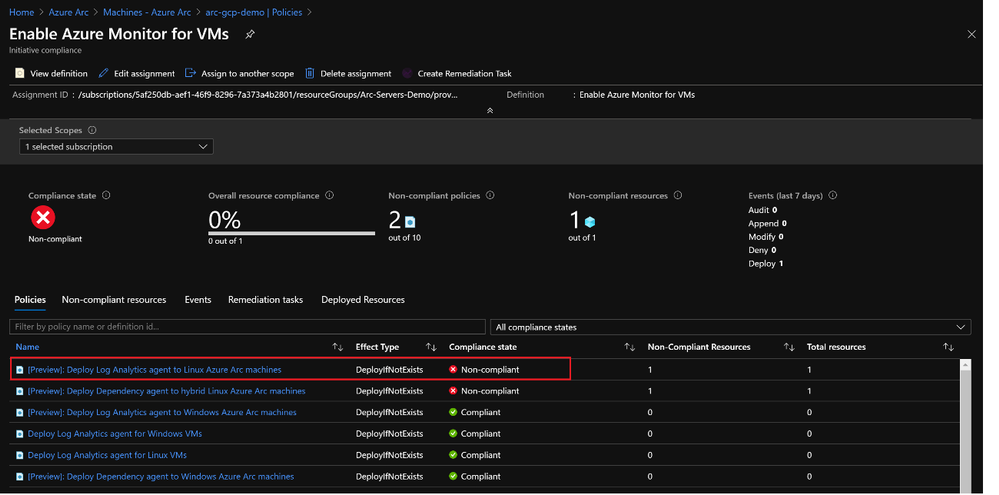
Inventory Management
Multitenant queries with Azure Resource Graph, can now also include Azure Arc enabled resources with filtering, using tags or tracking changes.
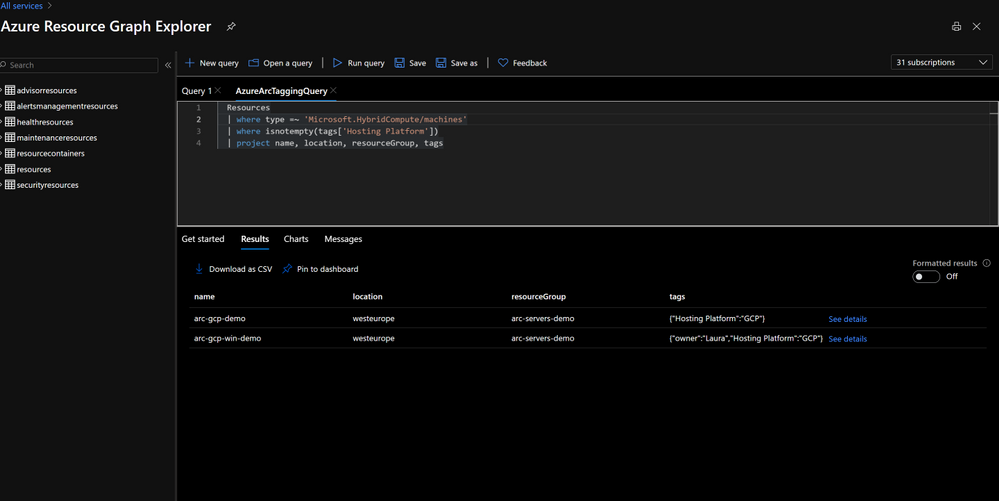
Hybrid Services Onboarding at Scale
Contoso can automate the deployment of agents and onboard Arc enabled resources into Azure Monitoring, Azure Automation, Azure Security Center or Azure Sentinel either by using Azure Polices or Azure Arc’s extension management capabilities. The extension management feature for Azure Arc enabled servers provide the same post-deployment configuration and automation tasks that you have for Azure VMs.
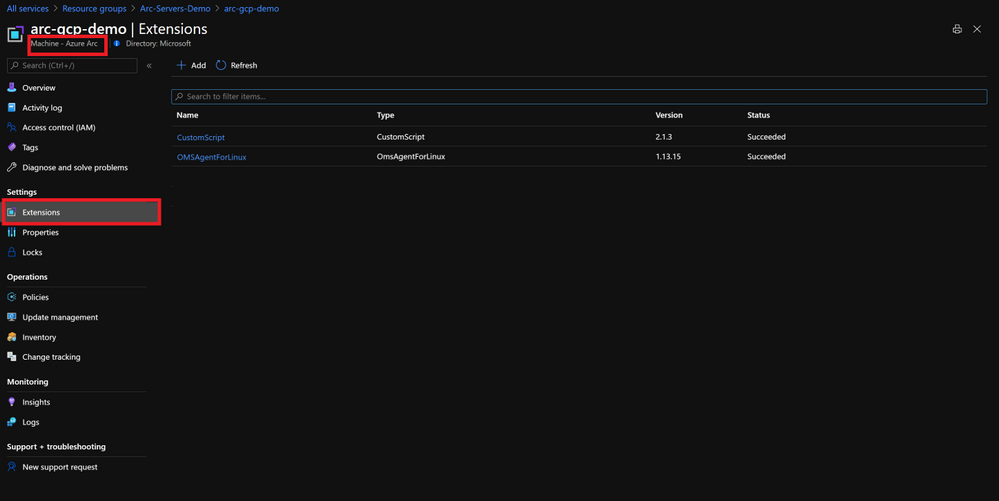
Contoso can also leverage policies to guarantee that all resources are properly onboarded into services like Azure Monitor by setting up remediation tasks that use the extension management feature, it will fix automatically any non-compliant resources.
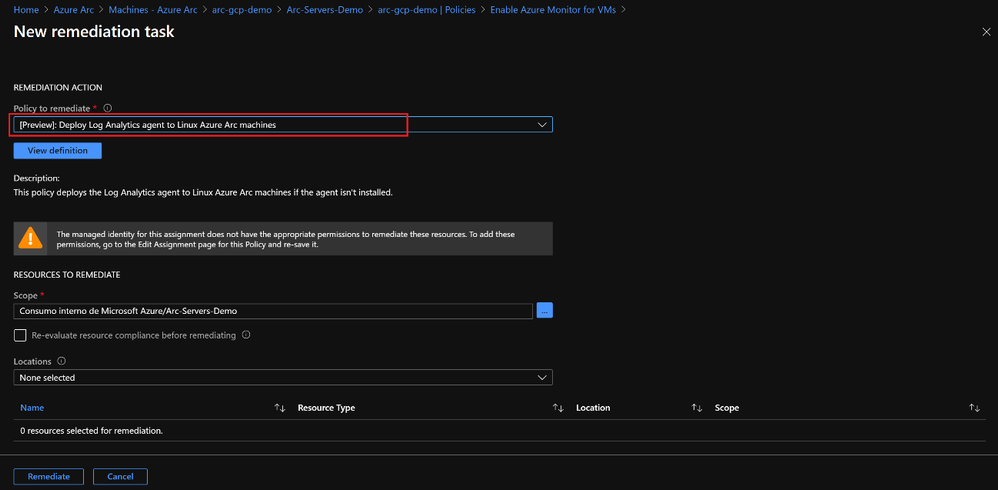
Access Management
Auditability provided by Lighthouse is kept as Azure Arc supports RBAC and the Azure activity log will keep track of actions.
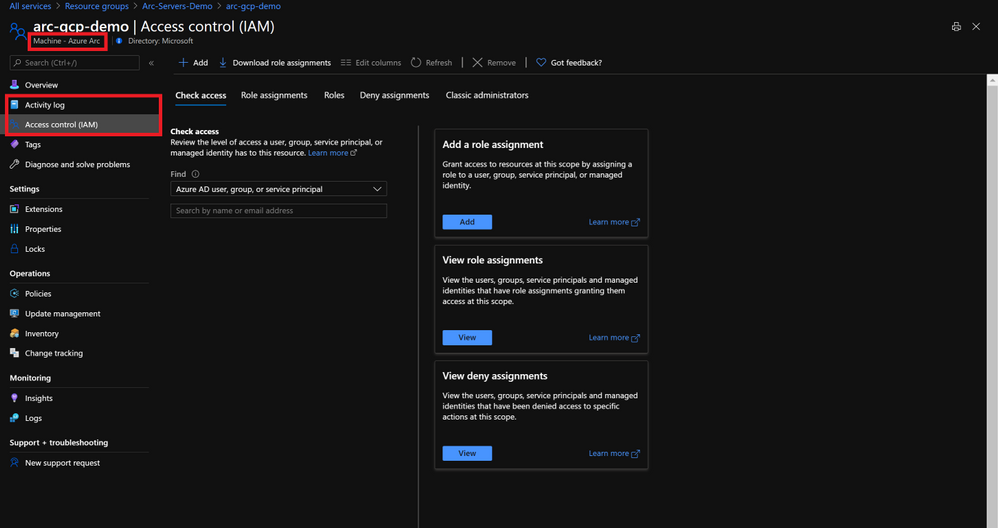
Application and Data Management at Scale
Contoso can use configuration as code and uniformly govern and deploy containerized application using GitOps-based configurations across on-premises, multi-cloud, and edge. Contoso can link a cluster to a Git repo that becomes the single source of truth for container deployments and applications, Azure Arc enabled Kubernetes will make sure there is no drift between Git and what is running in the cluster.
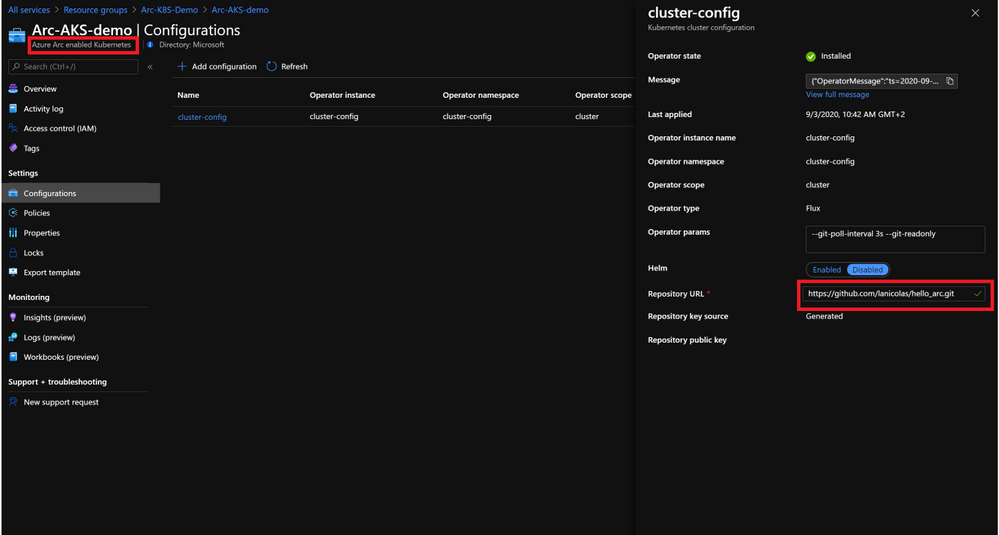
Azure Arc enabled data services allows Contoso to run Azure data services like Azure SQL Managed Instance and Azure Database for PostreSQL Hyperscale on any Kubernetes cluster with unified management and familiar tools.
With Azure Arc and Azure Lighthouse, Contoso is empowered to create cloud native management operations with no location boundaries.
Get Started
On this blog post we touched on a set of scenarios that are possible by combining Azure Arc with Azure Lighthouse and that will empower you to build reliable and at scale operations for hybrid and multi cloud environments with cross-tenant capabilities. To get started with Azure Lighthouse check out these links:
To get started with Azure Arc visit these links:






Recent Comments